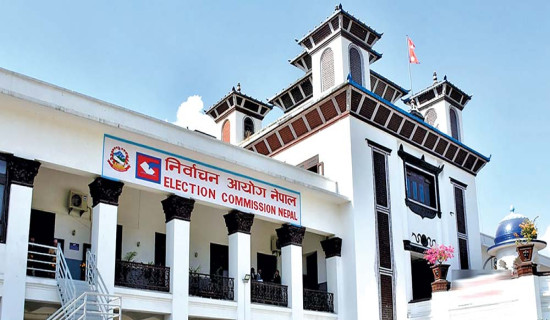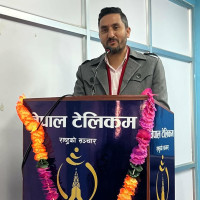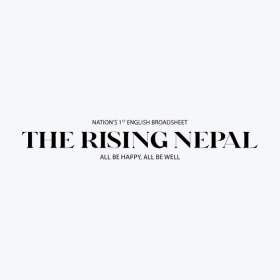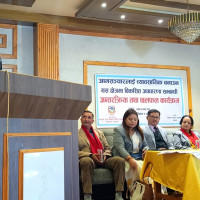- Sunday, 28 December 2025
Misri’s Visit
Ground Laid For PM Oli’s India Trip
Nepal and India have always been independent sovereign nations. Unlike India, Pakistan, and Bangladesh, which were once part of a single entity later divided by the British Raj, Nepal has historically stood apart. Yet, in the present context, the diplomacy between Nepal and India has remained relatively cordial and cooperative compared to India’s relations with other neighbours, particularly Pakistan.
A unique feature of the Nepal–India relationship is the 1,751 km open border shared by the two countries. Citizens can cross freely without visas, making travel and trade easier and strengthening deep people-to-people ties. This open border stands as a rare example of mutual trust in South Asia, and if replicated across the region, it could contribute significantly to peace, stability, and economic growth. At the moment, such an idea may sound like a utopian dream, but with the will of political leaders, social influencers, and the people, it is a dream worth striving for.
A strategic visit
Indian Foreign Secretary Vikram Misri recently concluded a two-day visit to Nepal on August 17–18, 2025, under India’s “Neighbourhood First” policy. His high-level meetings included interactions with President Ram Chandra Paudel, Prime Minister KP Sharma Oli, Deputy Prime Ministers, the Home Minister, Foreign Minister Arzoo Rana Deuba, the Foreign Secretary, and other senior government officials. Such visits are customary after an Indian Foreign Secretary assumes office but this particular trip was also widely viewed as groundwork for Prime Minister Oli’s upcoming official visit to India in mid-September.
Nepal relies heavily on India for many aspects of daily life. As a landlocked country, Nepal depends on India’s open borders for the import of essential goods, including food, fuel, and other daily commodities. Trade, border management, and infrastructure development with India are critical to Nepal’s sustenance. For India, on the other hand, relations with Nepal carry both geopolitical and socio-economic importance. Whenever high-level visits take place between Nepal and India, the Nepali public often anticipates breakthroughs on pressing bilateral issues. These range from the construction of bridges over border rivers to new air routes and agreements that affect agriculture and the flow of essential goods into Nepal.
For instance, the long-discussed bridge over the Mahakali River in Darchula remains a matter of life and death for local communities. This cannot be done until permission from India is granted, which has not happened yet. Similarly, Nepal’s ability to utilise its natural resources in many cases requires India’s cooperation, adding layers of complexity to the relationship. Indian media outlets such as The Times of India and The Economic Times highlighted Misri’s visit as a reflection of Nepal’s special importance in India’s neighbourhood diplomacy. As always, there are expectations that his discussions will pave the way for concrete results during Prime Minister Oli’s September trip.
According to Nepal’s Ministry of Foreign Affairs, Minister Arzoo Rana Deuba emphasised the need for additional air routes between the two countries. In the past, there was a direct flight route between Nepal and Pakistan, which has since been discontinued. Although not explicitly discussed during Misri’s visit, reopening such regional connectivity routes would greatly benefit travellers. Other unresolved issues continue to surface during every round of talks. The Pancheswor Multipurpose Project envisioned as a game-changing hydropower and irrigation project, has been stalled for decades due to disagreements over the detailed project report (DPR). Minister Rana pressed for finalising the DPR to move the project forward.
Similarly, longstanding issues such as the Tanakpur Canal, river training along the Banganga, Khado, and Rapti rivers, and the construction of connecting bridges along the Nepal–India border repeatedly reappear on the agenda but rarely progress. The success of Prime Minister Oli’s upcoming visit will also depend on the broader geopolitical environment. India, aspiring to be both an international market and a manufacturing hub, finds itself in increasing competition with China. The recent US imposition of high tariffs on Indian goods has already created ripples in India’s economy, which will inevitably impact Nepal as well, given that the Nepali rupee is pegged to the Indian currency.
Misri’s visit sent a clear message: Nepal occupies an important place in India’s foreign policy agenda. The question now is how Nepal can capitalise on this message. Prime Minister Oli’s upcoming visit presents a crucial opportunity to untangle bottlenecks that have persisted for years. For this to happen, the Nepali government must ensure proper homework in advance. It is not enough to repeat old talking points. A thorough review is required to understand why past negotiations failed to deliver. More importantly, the government should consider forming a team of fresh experts in trade, border management, infrastructure, energy, and migration—individuals with professional expertise but no direct political affiliations.
These experts should not only provide background advice but also be part of the official delegation, ensuring that technical issues are addressed in depth and with accuracy. This could make the difference between yet another symbolic visit and a truly transformative outcome. Critics have long argued that successive Nepali governments approach negotiations with India without adequate preparation. This has led to agreements stalling, projects stagnating, and opportunities being missed. If Nepal wants to move beyond this cycle, the Oli administration must demonstrate that it is willing to engage differently this time.
New voices
By preparing robustly and engaging new voices, Nepal can push for progress in commerce, connectivity, energy cooperation, and labour migration. If handled strategically, the September visit could deliver outcomes that benefit both nations and, more importantly, their people. Nepal and India have always shared a relationship unlike any other in the region—defined by history, geography, culture, and deep people-to-people ties. While challenges and disagreements are inevitable, the opportunities for cooperation are immense.
Oli’s upcoming visit to India should be treated as a pivotal moment to secure tangible agreements and lay the groundwork for a more stable and mutually beneficial partnership. If Nepal goes prepared, builds consensus at home, and pushes for long-overdue solutions, it could set the stage for a stronger, forward-looking relationship with India.
(Sharma is a senior journalist and women’s rights advocate. namrata1964@yahoo.com, X @NamrataSharmaP.)
















